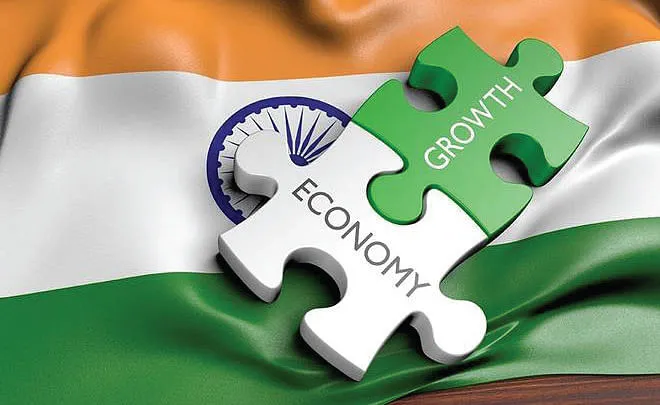Sharif Hussain Khan
The Israel-Palestine conflict has been a persistent and deeply rooted issue in the Middle East, shaping regional geopolitics, economies, and trade relationships. Recent escalations and the involvement of key global players have added complexity to an already intricate situation. At the core of these developments lies the challenge faced by the original vision of the India-Middle East Economic Corridor, exacerbated by Saudi Arabia’s reluctance to participate. In this discussion, we delve into the emergence of an alternative economic corridor, examining how it leverages the Levant Corridor, Red Sea, Horn of Africa, Iran Connection, and Northern Route to navigate the challenges posed by the Israel Palestine conflict.
The Israel-Palestine Conflict and Saudi Arabia’s Reluctance:
The Israel-Palestine conflict, a longstanding and contentious issue, has not only caused loss of life and suffering but has also had profound implications for the political and economic landscape of the Middle East. Recent escalations have exacerbated an already complex situation, influencing the political alliances and economic relationships of nations across the region. One significant result of this is Saudi Arabia’s reluctance to participate in the India-Middle East Economic Corridor. The reasons for Saudi Arabia’s hesitance are multifaceted. Firstly, Saudi Arabia has a historical alignment with other Gulf states, which are generally supportive of the Palestinian cause. Secondly, the strategic partnership between Saudi Arabia and the United States, which has recently brokered several Middle East peace agreements involving Israel, has created a delicate balancing act. These factors have contributed to Saudi Arabia’s reluctance to engage in an economic corridor that could be seen as a departure from its traditional stance.
Alternatives:
The Levant Corridor, extending along the eastern coast of the Mediterranean, presents itself as a critical component of the emerging alternative economic corridor. The region’s strategic location, historically recognized as a bridge between Europe, Asia, and Africa, provides a promising opportunity to bypass Saudi Arabia and establish a new trade route. However, for this to become a reality, significant investments in port infrastructure and transportation networks are required. The development of ports along the Mediterranean coast, from Turkey to Egypt, and the upgrade of rail and road connections between these ports and neighboring regions could significantly enhance the Levant Corridor’s capacity to facilitate trade. The utilization of existing and potential infrastructure projects, like the Belt and Road Initiative and other regional investments, could bolster the Lavant Corridor’s role in the alternative economic corridor.
Likewise, The Red Sea, with its strategic maritime location, is another linchpin in the emerging alternative corridor. This body of water is home to one of the world’s busiest and most vital trade routes, facilitating commerce between Asia, Europe, and Africa. The involvement of key regional players, such as Egypt and Sudan, is paramount in promoting economic activities along the Red Sea. These nations’ efforts to develop and manage ports and economic zones along the Red Sea shores can significantly contribute to the success of the alternative corridor. Moreover, a critical aspect of the Red Sea’s role in this corridor lies in its potential to serve as a hub for intercontinental connectivity. New technologies, such as blockchain and the Internet of Things, are increasingly being employed to enhance supply chain management and trade facilitation. In the Red Sea region, these technologies could be deployed to create efficient and transparent trade corridors, ensuring that goods flow smoothly across borders.
Furthermore, The Horn of Africa, known for its complex political and economic dynamics, is another component of this alternative economic corridor. The region’s potential for trade and investment is substantial, thanks to its strategic location along key maritime routes. Ethiopia, for example, serves as a land bridge connecting the Indian Ocean to the Mediterranean via the Red Sea. This route offers an alternative to the traditional Suez Canal transit. Nonetheless, there are significant challenges to be addressed in the Horn of Africa, primarily related to security and stability. Eritrea, Somalia, and parts of Ethiopia have experienced prolonged conflicts and political instability, creating potential roadblocks for the development of infrastructure and trade. Collaborative efforts between regional and international stakeholders will be crucial to surmounting these challenges and ensuring the success of the corridor.
In a similar vein Iran, with its strategic location and significant energy resources, is another key player in the emergence of this alternative economic corridor. The country’s location allows it to serve as a pivotal node in connecting various regions, and its vast oil and gas reserves make it an attractive partner for energy trade. However, Iran’s isolation on the international stage, primarily due to nuclear-related sanctions, presents both opportunities and challenges. The lifting of sanctions and the normalization of diplomatic relations with Iran could open doors to substantial economic cooperation. Iranian energy resources could flow to meet the growing demand in India and other regions via the corridor. The Iranian government’s commitment to investing in infrastructure projects and connecting to its neighbors, such as the Chabahar Port in Iran, provides evidence of its interest in participating in the corridor.
And finally, The Northern Route, encompassing overland transportation options connecting the Lavant Corridor, the Red Sea, the Horn of Africa, and the Iran Connection, is critical to the success of this alternative corridor. To realize this vision, significant investments in infrastructure are required. This includes the construction of modern road and rail networks, as well as customs and logistics facilities that facilitate the seamless movement of goods. The Northern Route holds the promise of facilitating not only the movement of goods but also people and information. Connectivity in this region will not only boost trade but also enhance cultural and diplomatic ties. By providing efficient and cost-effective transportation links, it can become a catalyst for economic growth and regional integration.
Conclusion:
In the midst of a persistent and complex Israel-Palestine conflict and Saudi Arabia’s reluctance, the emergence of an alternative economic corridor, offers a ray of hope
Sharif Hussain Khan,
Editor Entrepreneurship-Cell , Jamia Millia Islamia, New Delhi






